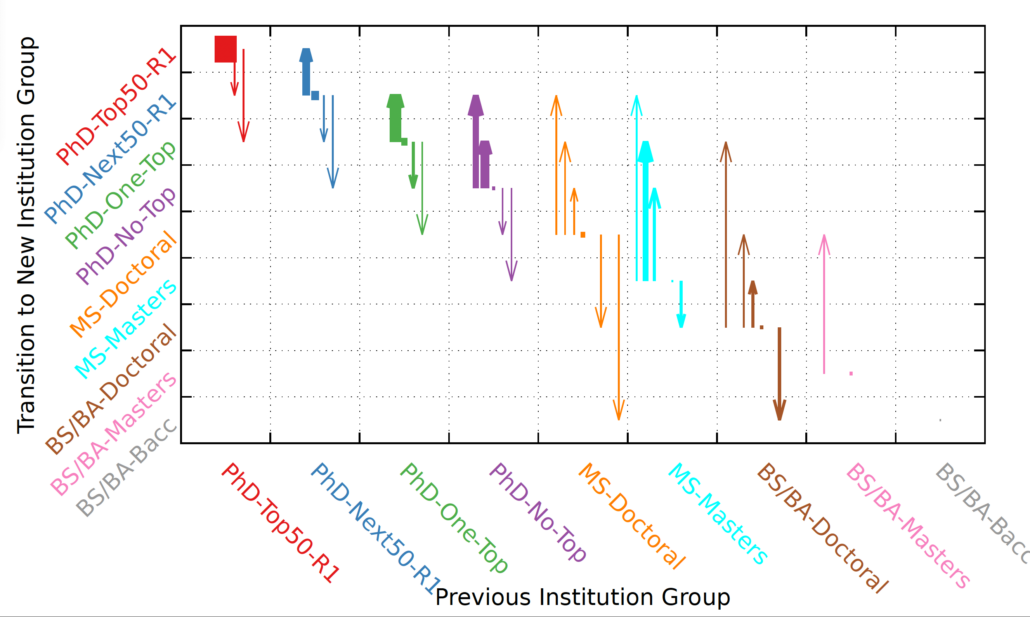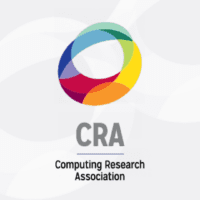A Better Understanding of the Faculty Educating Computer Science Students in the United States
By Craig E. Wills, Worcester Polytechnic Institute
The motivation for this work is a better understanding of the faculty educating Computer Science students in the United States. Most previous work has largely concentrated on research faculty at PhD-granting institutions.
A broader look at faculty educating CS students is needed as CS PhD-granting “R1” institutions in the U.S. account for about half of the Bachelor’s degrees awarded, but less than 15 percent of the institutions doing so. These percentages translate into over 800 non-CS-PhD-granting institutions awarding more than 50,000 Bachelor’s degrees over two years of data. PhD-granting and research-focused institutions also account for a small percentage of institutions designated as serving populations of minority students.
Motivated by the need to not only examine a range of institution types, but also both “dual-track” (traditional tenure-track) and teaching-track faculty at these institutions, we take an approach where we gather public data about faculty at institutions offering Computer Science degrees. This approach allows us to select the institutions and faculty we study to ensure representation of a variety of types.
Over two years we have collected information about more than 16,000 Computer Science faculty from nearly 550 institutions awarding Computer Science degrees. These institutions are divided into nine distinct groups based on the highest CS degree offered and Carnegie Classification of the institution. We use graduate CS ranking to further assist in distinguishing PhD-granting institutions. We also have three groups for institutions designated as minority serving for specific population groups.
Given this motivation and approach, we are able to determine answers to questions regarding different types of faculty at different types of institutions. Results from this analysis include: size and composition of dual- and teaching-track faculty, representation of teaching-track faculty of full-time faculty across all institutions, ratios between degrees awarded and faculty, predicted gender distribution, rates for promotion in rank of dual- and teaching-track faculty, churn of faculty via additions and losses, and movement of faculty from one institution to another.
Notable results include:
- Teaching-track faculty represent about a quarter of full-time faculty across all institutions. This percentage ranges from 15 percent for BS/BA-granting Baccalaureate institutions to 33 percent for MS-granting Masters institutions. Teaching-track faculty represent 25 percent of all full-time faculty in public and 19 percent in private institutions.
- Employing a name-based gender prediction tool, aggregate results show that 21 percent of all Full Professors, 25 percent of Associate Professors and 30 percent of Assistant Professors are predicted as female. Results are similar for teaching-track faculty with 26 percent of those faculty at a promoted rank and 30 percent at an initial rank predicted to be female.
- In terms of the number of additions and losses relative to the number of faculty in the previous year, the results show that overall institutions added 9 percent new dual-track faculty while losing 6 percent for a net gain of 3 percent. During the same timeframe institutions added 15 percent new teaching-track faculty while losing 9 percent for a net gain of 6 percent.
- Results for movement of faculty from one institution for another show that movement within the same institution group accounts for 40 percent of all dual-track transitions with 17 percent of all transitions from one top-ranked PhD institution to another. The remaining faculty transitions were between institution groups with the most movement (generally “upward”) involving institutions in the next two groups of PhD-granting institutions. A similar analysis for teaching-track faculty shows movement is largely to top-ranked PhD institutions.
In addition to the results obtained thus far, we have established a baseline for future work including longitudinal analysis as well as following up with faculty of interest for demographic and background information to better understand the pathways taken by CS faculty at different types of institutions.
The full report is available here.
Figure 1: Teaching-Track Percentage of Full-Time Faculty

Teaching-track faculty represent about a quarter of full-time faculty across all institutions. This percentage ranges from 15 percent for BS/BA-granting Baccalaureate institutions to 33 percent for MS-granting Masters institutions. Teaching-track faculty represent 25 percent of all full-time faculty in public and 19 percent in private institutions.
Figure 2: Percentage Gains and Losses of Dual-Track and Teaching-Track Faculty

In terms of the number of additions and losses relative to the number of faculty in the previous year, the results show that overall institutions added 9 percent new dual-track faculty while losing 6 percent for a net gain of 3 percent. During the same timeframe institutions added 15 percent new teaching-track faculty while losing 9 percent for a net gain of 6 percent.
Figure 3: Movement of Dual-Track Faculty

Results for movement of faculty from one institution for another show that movement within the same institution group accounts for 40 percent of all dual-track transitions with 17 percent of all transitions from one top-ranked PhD institution to another. The remaining faculty transitions were between institution groups with the most movement (generally “upward”) involving institutions in the next two groups of PhD-granting institutions. A similar analysis for teaching-track faculty shows movement is largely to top-ranked PhD institutions.









